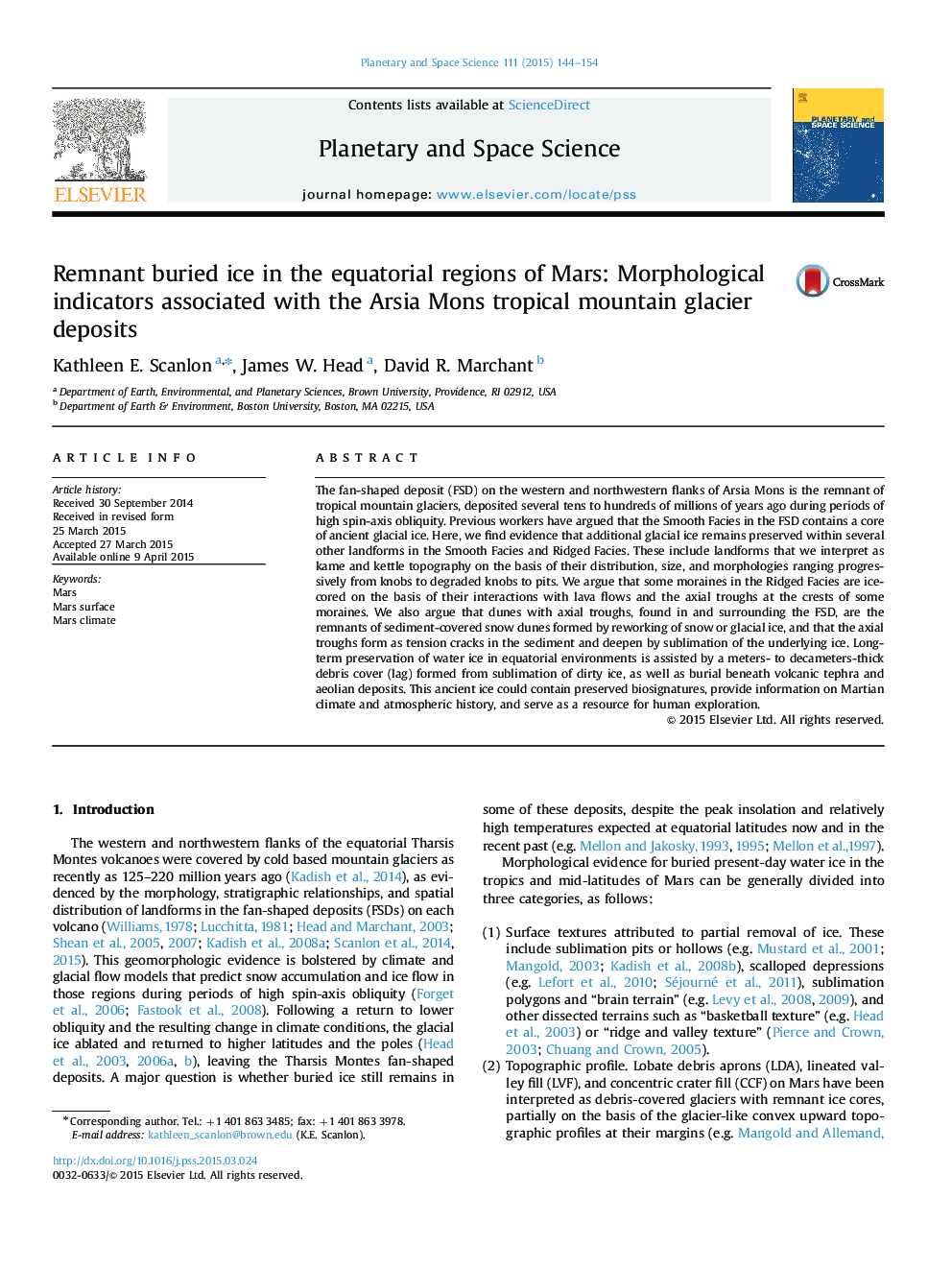| کد مقاله | کد نشریه | سال انتشار | مقاله انگلیسی | نسخه تمام متن |
|---|---|---|---|---|
| 1780994 | 1523928 | 2015 | 11 صفحه PDF | دانلود رایگان |
• Landform morphology in the Arsia Mons glacial deposits suggests extant buried ice.
• These landforms include hypothesized ice-cored moraines and dead-ice blocks.
• Hypothesized remnant niveo-aeolian dunes suggest regional aeolian transport of snow.
• These extant ice reservoirs add to those already described for the Arsia Mons FSD.
• Ice may contain climate records or biosignatures and would be of use to human crews.
The fan-shaped deposit (FSD) on the western and northwestern flanks of Arsia Mons is the remnant of tropical mountain glaciers, deposited several tens to hundreds of millions of years ago during periods of high spin-axis obliquity. Previous workers have argued that the Smooth Facies in the FSD contains a core of ancient glacial ice. Here, we find evidence that additional glacial ice remains preserved within several other landforms in the Smooth Facies and Ridged Facies. These include landforms that we interpret as kame and kettle topography on the basis of their distribution, size, and morphologies ranging progressively from knobs to degraded knobs to pits. We argue that some moraines in the Ridged Facies are ice-cored on the basis of their interactions with lava flows and the axial troughs at the crests of some moraines. We also argue that dunes with axial troughs, found in and surrounding the FSD, are the remnants of sediment-covered snow dunes formed by reworking of snow or glacial ice, and that the axial troughs form as tension cracks in the sediment and deepen by sublimation of the underlying ice. Long-term preservation of water ice in equatorial environments is assisted by a meters- to decameters-thick debris cover (lag) formed from sublimation of dirty ice, as well as burial beneath volcanic tephra and aeolian deposits. This ancient ice could contain preserved biosignatures, provide information on Martian climate and atmospheric history, and serve as a resource for human exploration.
Journal: Planetary and Space Science - Volume 111, June 2015, Pages 144–154
